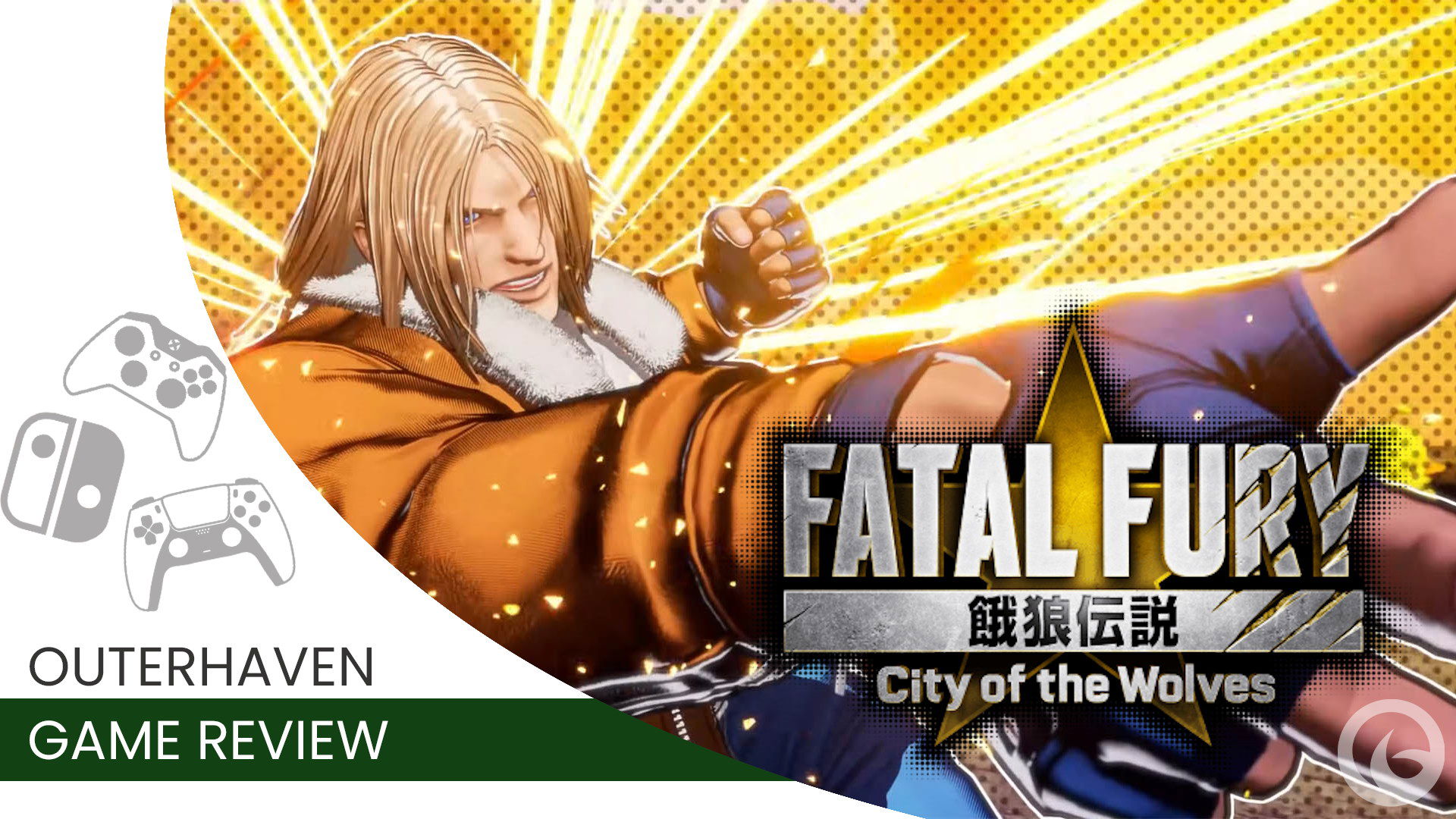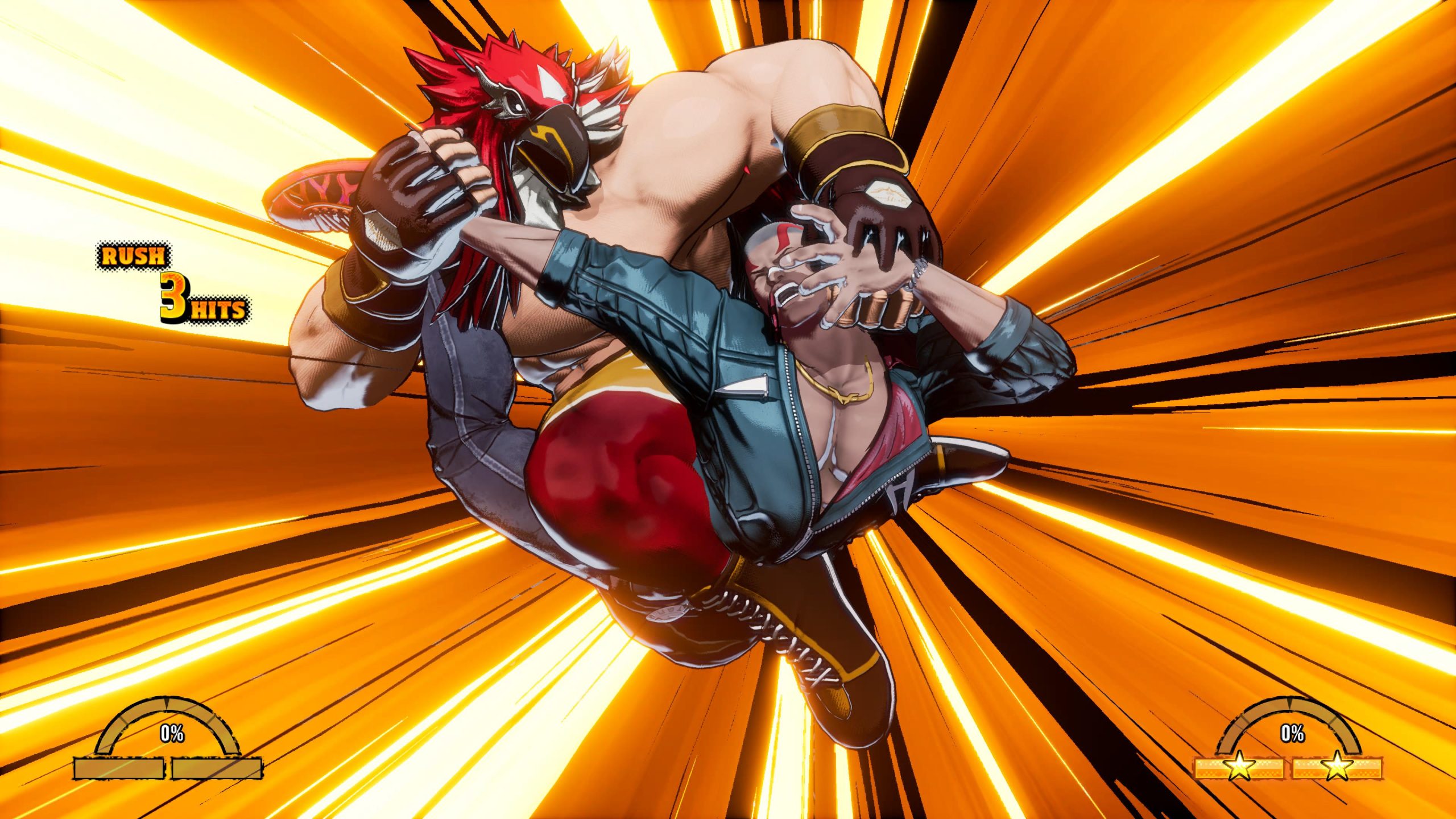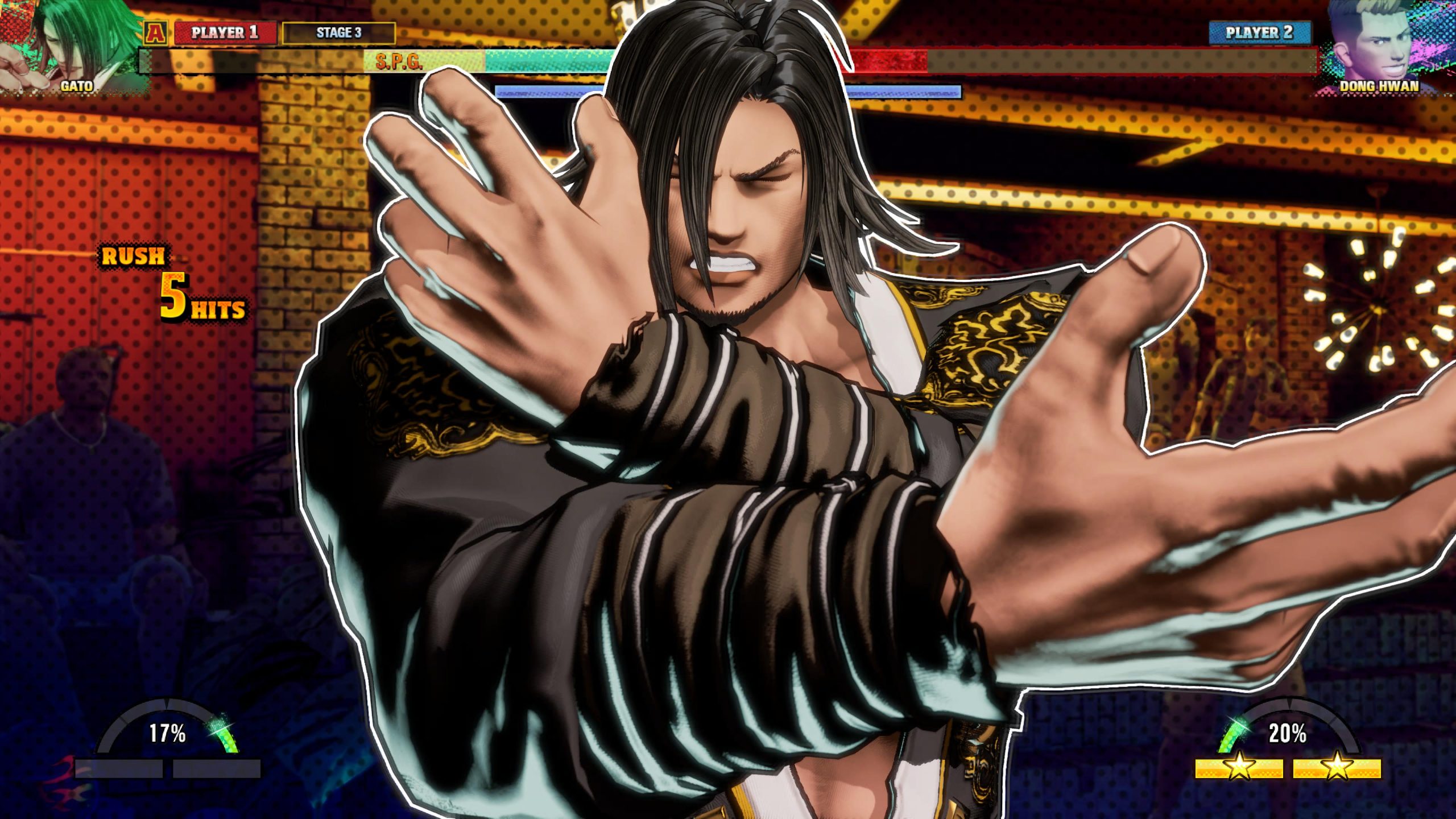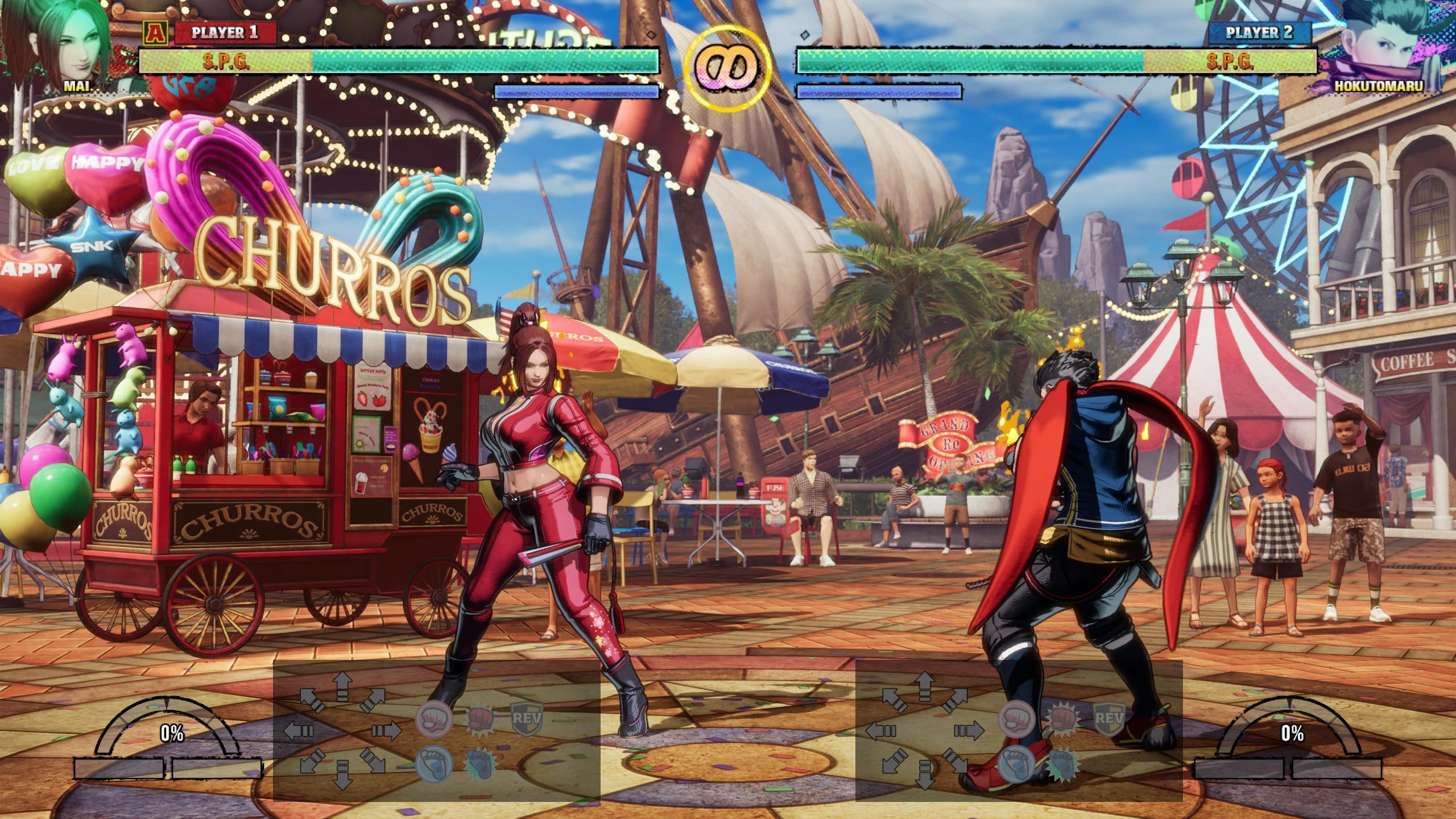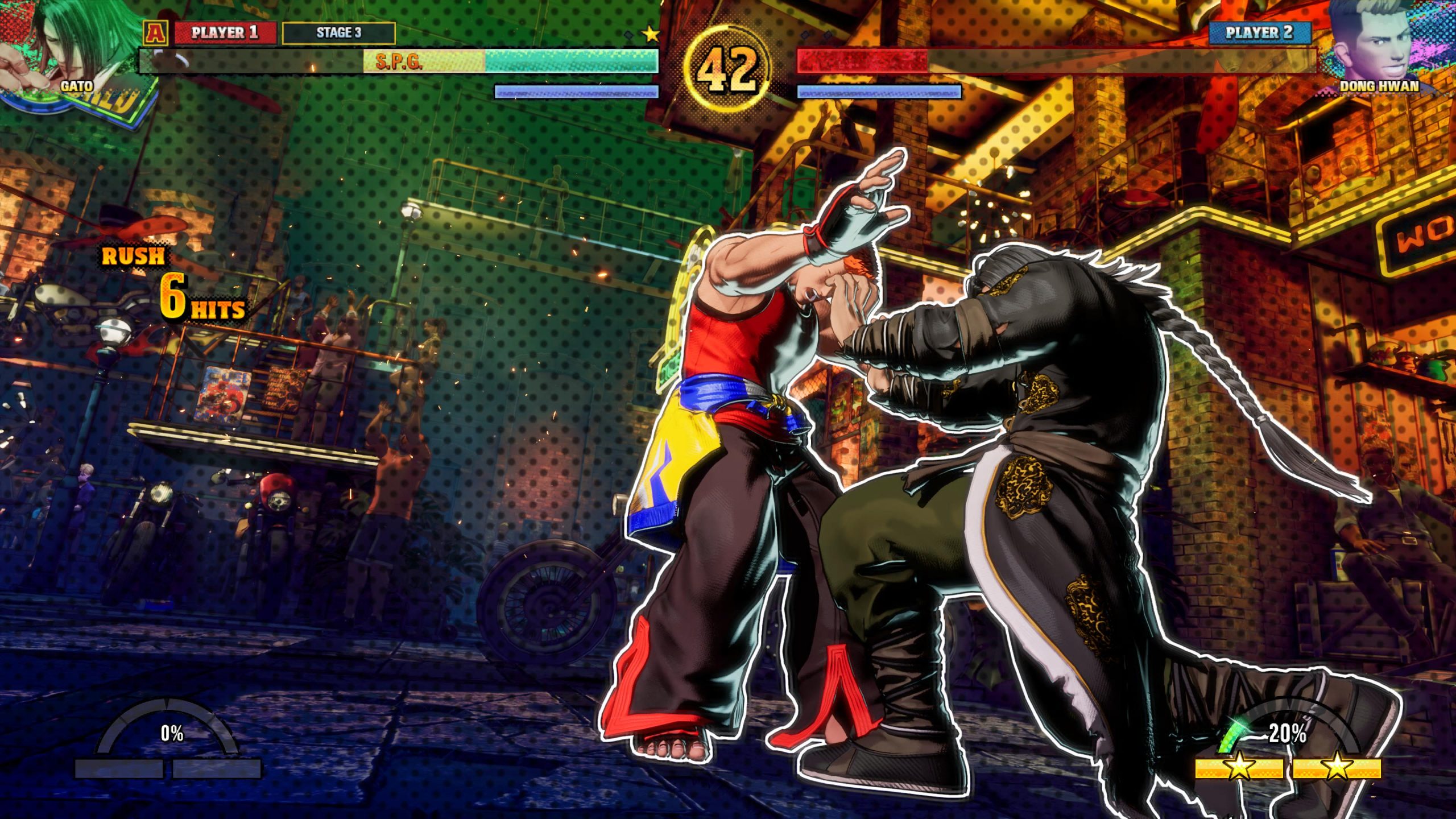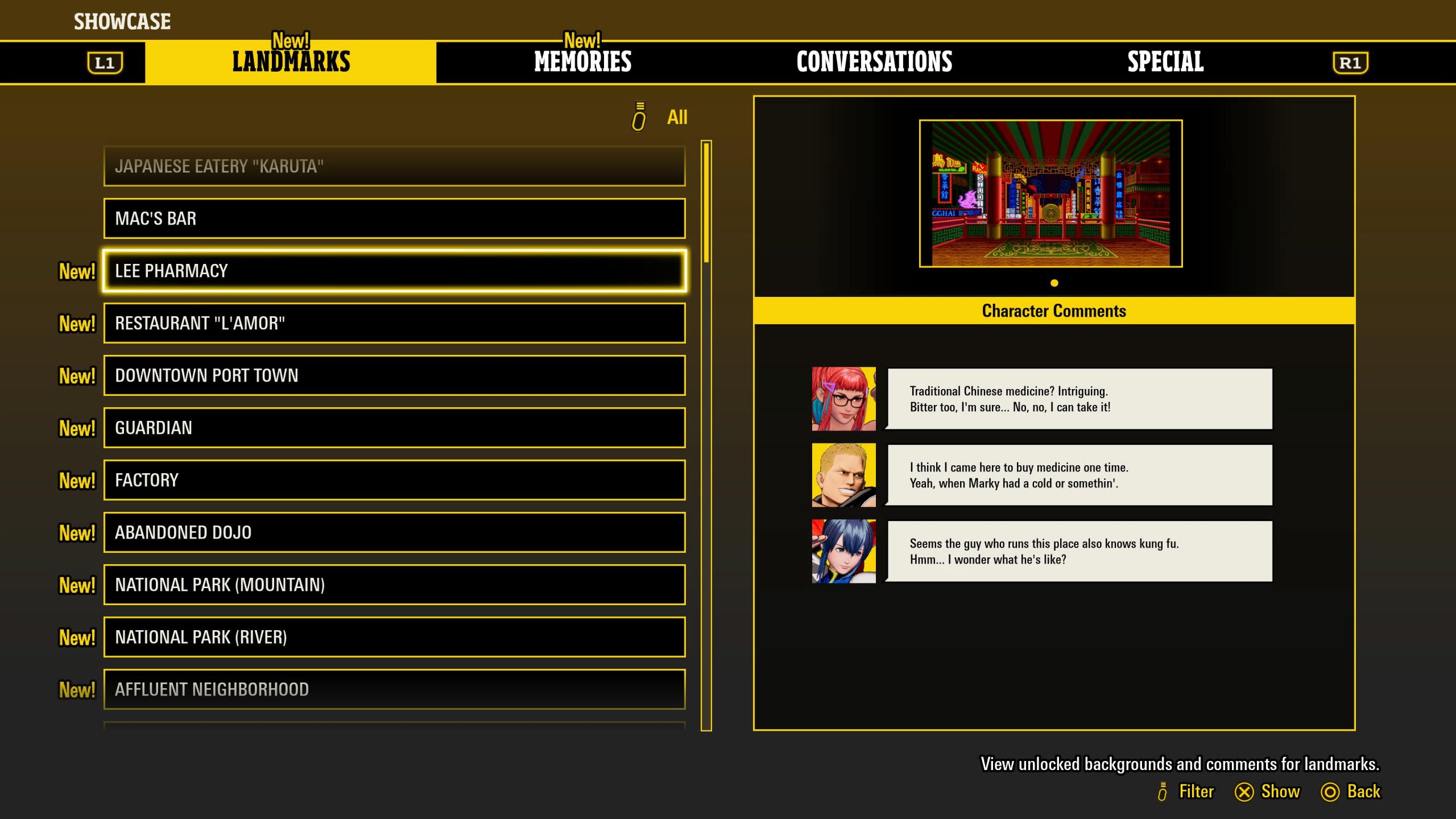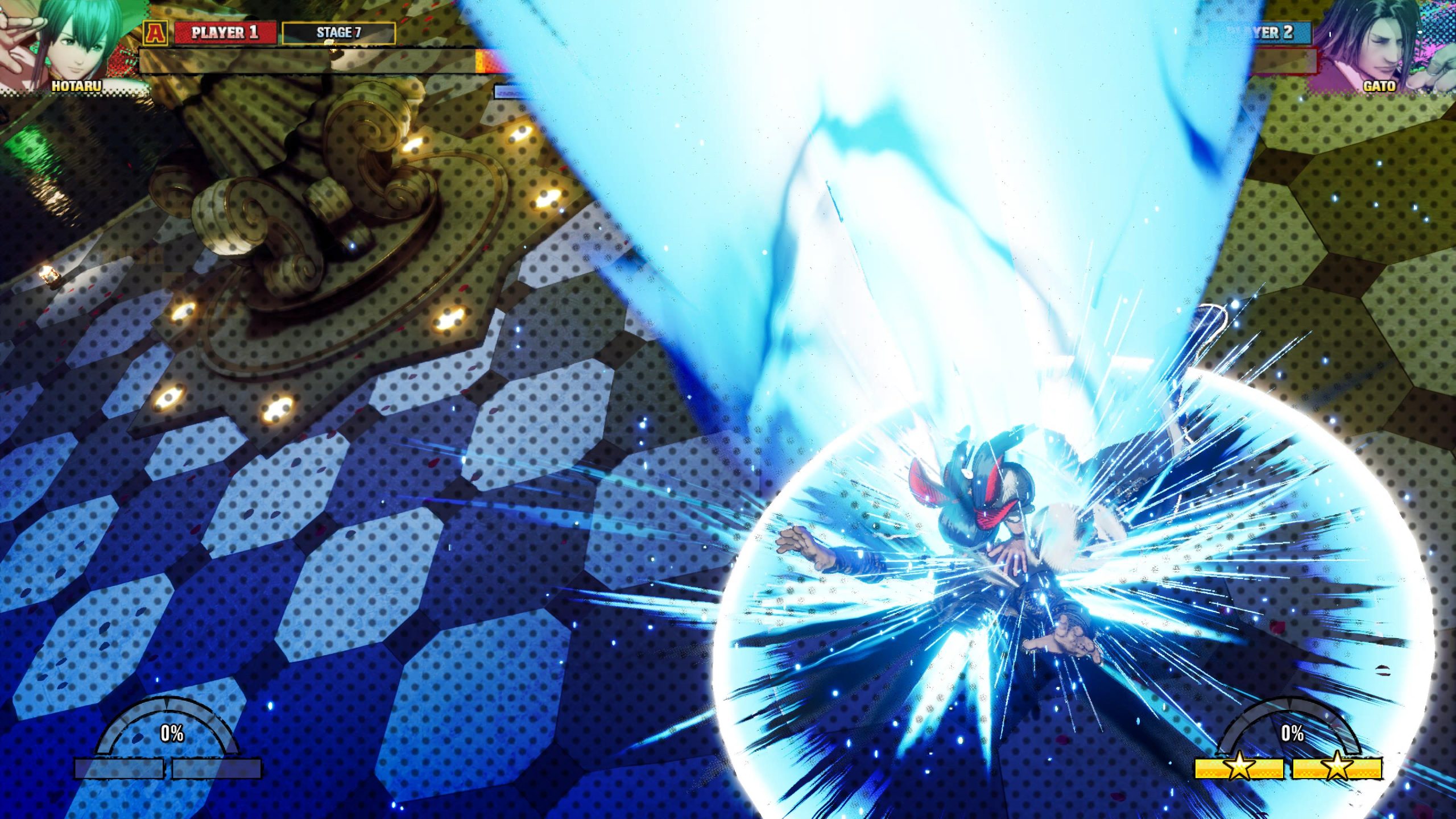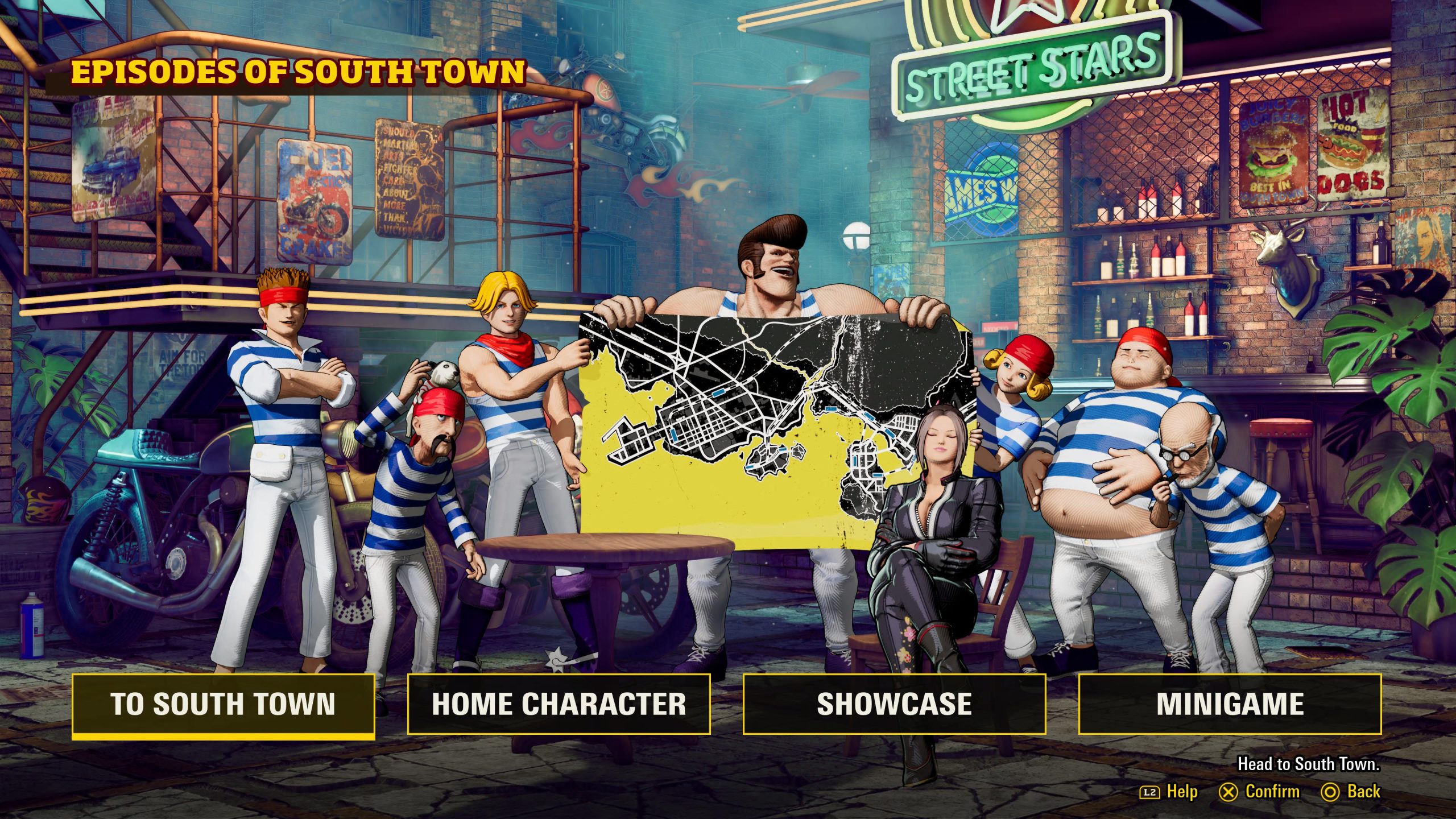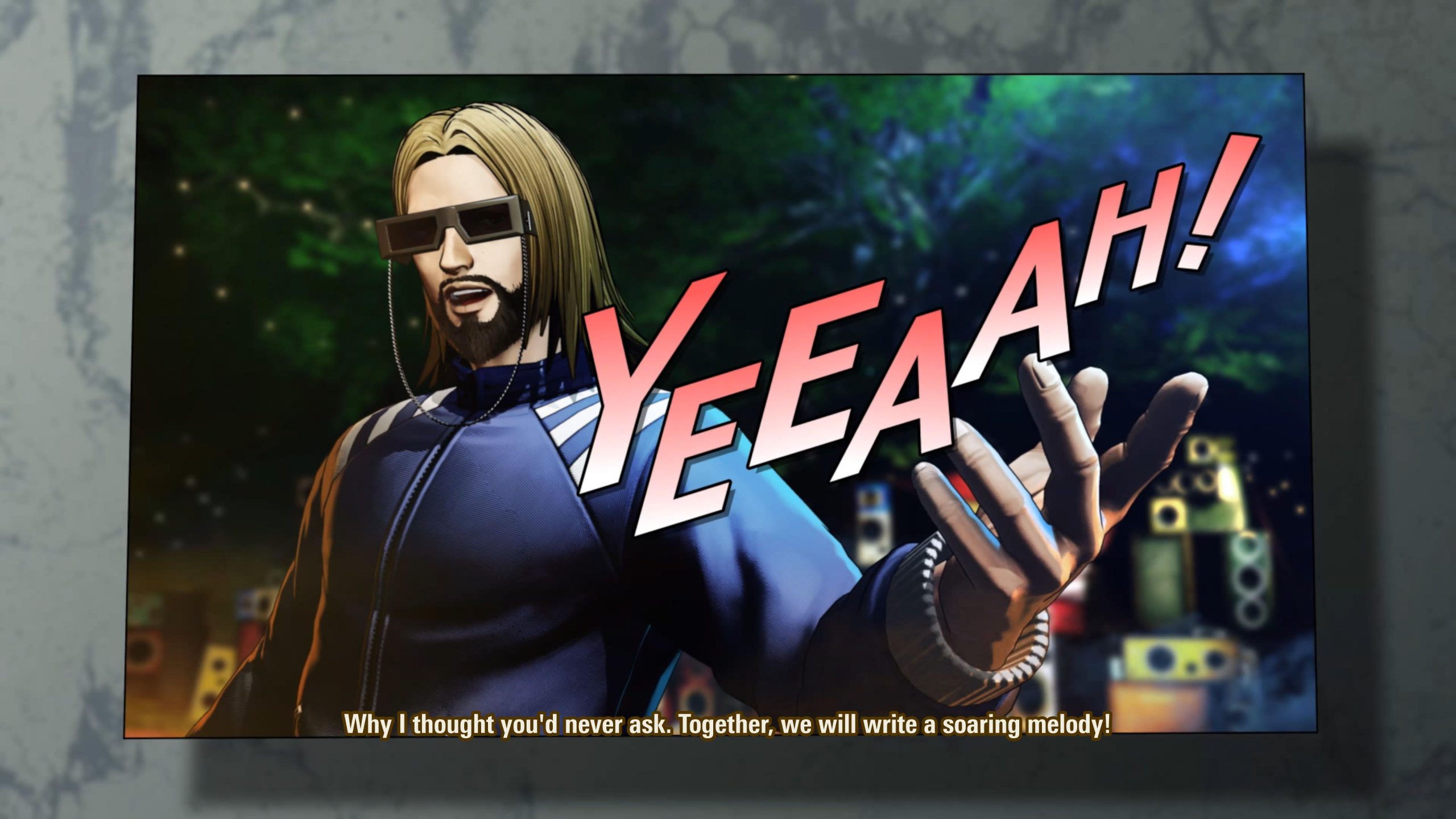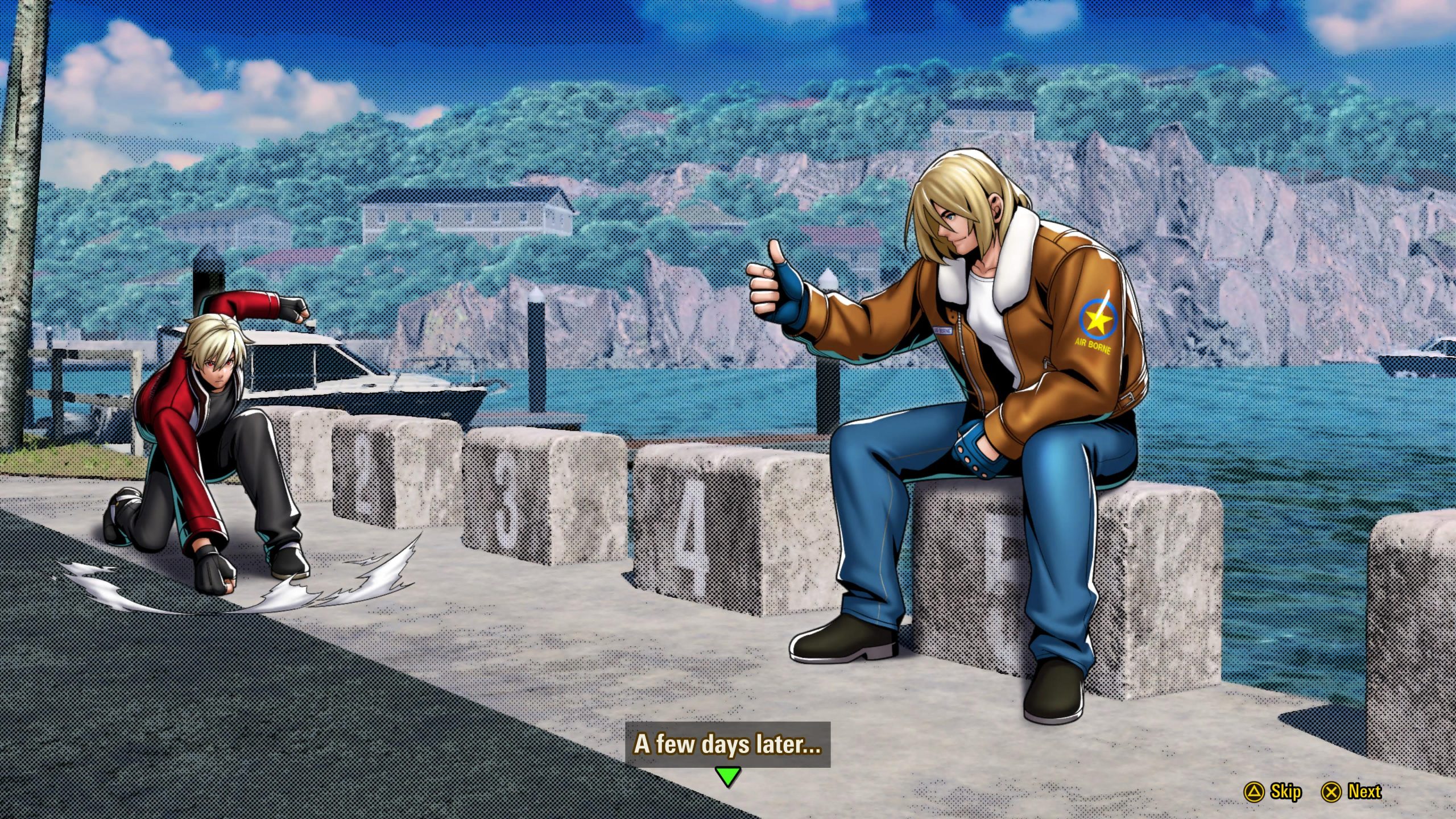After 26 years, Fatal Fury: City of the Wolves has finally entered the scene—a series that helped shape the fighting game genre during the Street Fighter 2 boom. Former Capcom developers—experts in fighting games—ventured to create the first Fatal Fury title on different hardware, with a unique layout, aiming to redefine what was considered the norm.
Within its first 10 years, the series released nearly eight titles, continuously refining its roots set in a fictional city. Later, with Fatal Fury: Mark of the Wolves, the franchise played it safe, yet explored risky territory as it sought to evolve. After decades away from the original game with its iconic characters finding new life in other games such as King of the Fighters and Street Fighter 6, SNK is finally ready to return to Southtown to conclude what Garou: Mark of the Wolves began, 26 years ago!
Game Name: Fatal Fury: City of the Wolves
Platform(s): PC, PS5 (Reviewed), Xbox Series X
Developer(s): SNK
Publisher(s): SNK
Release Date: April 24, 2025
A Long-Awaited Return to Southtown
Fatal Fury: City of the Wolves continues the story where Mark of the Wolves left off. Geese is all but dead and gone, and his legacy is about to be claimed by whoever prevails in a new King of Fighters: Maximum Mayhem tournament. Beyond his businesses, three scrolls are also part of the legacy Geese Howard has left behind. Because of this, Wolfgang Krauser’s Stroheim organization decides to hold the tournament to determine who will claim it. With Rock’s decision to help former antagonist Kain rescue his mother, who was once thought to be deceased, the tournament begins apace, with new and old wolves unleashing their fangs once more.
Fatal Fury: City of the Wolves adopts a comic book style for its characters. Each arcade intro, victory pose, and Hidden Gear move feels larger than life, as if the poses are jumping off the pages. Thanks to this approach, classic characters receive brand-new looks from their 2D beginnings. Returning figures in the Fatal Fury mythos, such as Mai and Billy, also sport fresh threads. The new visual style and character cohesion are impressive, and former characters gain new weapons to wield, enhancing the system’s depth.
Character Abilities and Cameo Concerns
Returning characters are given new tools from their international experiences via King of Fighters and other titles. Although The King of Fighters borrows characters from the Fatal Fury universe, the timelines are considered separate. Terry’s new Power Tackle and Mai Shiranui’s crouching command heavy kick changes are examples of this evolution. A couple of the new additions to the roster are questionable, as they are based on real people who, at the very least, have nothing to do with the game or fighting games whatsoever. Cristiano Ronaldo and DJ Salvatore Ganacci are the two most notable examples.
A Massive Soundtrack and DJ Collaborations
There are 350 tracks ready to go in City of the Wolves, with no need to unlock them. The collaboration mode features 11 world-famous DJs bringing their musical interpretations to the game. Salvatore Ganacci’s training mode song has a nostalgic 2000s Training Room music vibe. The “Training Stage is separate” trend in fighting games started in that era, adding to the sense of nostalgia. City of the Wolves moves away from the traditional grid, offering a gym setting to bash around in instead. The DJ interpretations incorporate elements from the games, giving them a unique flair. Collaboration Mode can be turned off, also.
As for the official tracks, every Art of Fighting and Fatal Fury game are alsoo represented. Want to rock out to Neo Geo Pocket Color Fatal Fury tracks while fighting? You absolutely can.
SNK didn’t have to go the distance and do this, but I’m glad that they did. Especially when other developers either lock music behind gated systems or DLC, or don’t even include music tracks via a jukebox at all. It may not seem like a big deal, but fans of SNK fighting games will love this.
Understanding the New REV Battle System
The new battle system in City of the Wolves introduces several mechanics to master. The REV system offers more defensive properties than Street Fighter VI’s Drive mechanics, including various blocking methods, such as the Rev Guard—which even negates chip damage. REV Blow is an armor-based move capable of piercing through almost anything. Potential and Hidden Desperation Moves are now referred to as Gears. The SPG (Selective Potential Gear) is derived from the T.O.P. system from Mark of the Wolves. The basic three positions on the health bar—front, middle, and back—remain, though reducing the S.P.G. gauge is no longer possible as it was in the original Mark of the Wolves. Both Power bars and being within the S.P.G. gauge can bring out the powerful Hidden Gear Desperation Move in its cinematic glory.
Breaking a heavy attack version of a special move can interrupt an attack and allow for additional combo opportunities. Rev Arts themselves can chain into other Rev Arts, creating fluid and dynamic combinations. However, overheating may occur if Rev-based mechanics are overused within a certain timeframe when the new Rev Meter is at its peak. Cooldowns can help, but they activate the guard break bar if used in exhaustion.
It’s all exciting stuff and there’s a lot of tech to learn, but the game is also straightforward and not as complicated as that of another popular fighting game. The curve is not Guilty Gear Strive level difficult, but enough to state that it’s a near counter to it with an easier gate of entry.
The Surprise Return of the 2-Lane System
The surprise was the return of the 2-Lane System that debuted in Fatal Fury: The King of Fighters—released in 1991!. Characters can shift back and forth into the background or foreground, adding a new layer of complexity to the gameplay. Seeing this system make a comeback, combined with the new mechanics, was a true shock. The back-and-front-facing dynamics harken back to the Southtown tournaments of old, which originally gave Fatal Fury its distinct identity and set it apart from the 2D fighting era.
This is important as it gives players yet another way to avoid attacks, especially projectiles, by moving into the background for a split second. It’s also not 100%, as some moves will still smack players in the background, while other moves will forcibly punt you into it.
A nitpick would be the lack of new stages similar to the two-lane system Dream Land stage. Why a mechanic that differentiates itself from the Street Fighter series isn’t fully embraced is a notable question. While SNK has stated that more stages featuring this and other Real Bout/Fatal Fury mechanics will be added in the future, it could have made for a stronger start.
Cameos, References, and Returning Legends
The cameos are certainly plentiful. From characters to name drops, they’re all present. As a fan, I was thrilled to see a certain Pao Pao Cafe owner make an appearance, as well as another Art of Fighting character featured in a cutscene. These surprises feel unexpected, but given that Art of Fighting and Fatal Fury share the same universe, it’s as though everyone is invited in some way and can appear just about anywhere.
It’s even to the point where SNK throws everything but the kitchen sink. You’ve got MVS Neo Geo arcade cabinets in Rock’s stage, a bunch of Metal Slug references scattered throughout the game (ostriches with gatling guns), and, of course, the Art of Fighting tie-in through the plot. Mr. Big plays a significant role in it. Who better to stir the pot than Geese Howard’s old rival and the original organizer of the first-ever King of Fighters tournament? It was quite a treat to see SNK let fans reconnect with their roots. And with SNK confirming that more characters from the Fatal Fury series will return as roster additions, this is only the beginning.
Arcade Mode: Satisfying Payoffs and Plot Closures
Arcade Mode truly delivers in City of the Wolves. The sense of fulfillment is undeniable when it comes to the endings. Some resolve loose ends from Mark of the Wolves, while others go a step further by bridging gaps in the series’ lore that were previously unexplored. There were moments when I was absolutely in awe of how a plot point, originating as far back as Fatal Fury 3, was brought to a satisfying conclusion.
The care SNK has shown in this installment reflects the promises made in past interviews. Arcade Mode also ties together threads introduced by characters since the beginning of Garou and builds on hints from their subsequent appearances over the decades. Each ending either provides closure or meaningful progression for the character you complete the game with—even Ganacci’s.
Episodes of South Town: An RPG-Style Campaign
Episodes of South Town is an RPG mode similar to World Tour Mode in Street Fighter VI, or perhaps more akin to Alpha 3’s version of World Tour Mode. A single character is chosen to explore three different areas of South Town, featuring both filler and story-driven fights. Levels and equipment are available to enhance your chosen character, offering Attack Power bonuses and special combo moves to give you an edge.
Many no-name characters in this mode showcase familiar techniques from the Fatal Fury series that have yet to make their way onto a main roster character. For instance, a certain Taekwondo practitioner’s techniques are used by a no-name character, despite the original Fatal Fury veteran not yet appearing in the game.
In Episodes of South Town, each fighter has a unique motive, which drives their individual story. For example, Mai must track down a shinobi who has been targeting members of her Shiranui clan, prompting her return to South Town to uncover the culprit. In some areas, 3 to 4 opponents may appear for you to battle. Many place names reference classic Fatal Fury and Art of Fighting stages, such as Delta Park or the Kyokugen Dojo. There are even surprises hidden in certain locations, including characters who aren’t part of the current roster.
At the end of an EOST run, each character gains skills they can equip, and their story is resolved with additional lore to enjoy. A standout feature is that unlocked skills can be shared with other characters. The tougher challenge, Southtown+, introduces even stronger adversaries for leveling up. Various parts of South Town are showcased in the game, with stages from both the Art of Fighting and Fatal Fury franchises. Characters even comment on their feelings about these iconic locations.
Additional unlockables include rich dialogue between characters, compelling enough to rival Drama CDs (remember those?). Players can delve deeper into these interactions through Episodes of South Town. For instance, Terry has a few questions about the future of South Town and what motivates both friends and foes alike.
A misstep here is that Episodes of South Town does not take as many risks as other fighting games of this nature for a single-player experience. For example, the Dramatic Battles or Two-on-One fighting that started with Fatal Fury (Not Street Fighter) occurred when one player was fighting a CPU opponent, and then another player joined in. This resulted in both players taking on the opponent in a tag team fashion before they both had to take on each other. City of the Wolves seems to continue to have Fatal Fury abandon these ideas as quickly as SNK did, while it ditched the teammates onlooking during the NESTS saga King of Fighters games. While enjoyable, I would have liked to have seen more extra stuff, like this, brought back in for this mode.
Which Control Scheme Will You Use
For those wondering, yes, City of the Wolves does indeed feature both an arcade and a modernized control scheme, called Smart. And just like Street Fighter VI and a few other games, the arcade is the original control scheme that you remember. You want to those a fireball or do another special move, you’ve got to know the moves. While the Smart control scheme lets you perform special moves while pressing a button. Now, I know that debate of which is better is likely going to ensue, I’m just letting you know that the options exist. It’s up to you if you use either.
Versus Mode and Multiplayer Options
City of the Wolves keeps the head-to-head gameplay alive and well. Versus and Special Versus modes are available for offline play, with Special Versus offering unique rule sets, such as unlimited Power Gauge, Overheating enabled, and more. The matchmaking system is also present, offering as much crossplay functionality as one could hope for.
It’s a complete package, perfectly designed for fighting game fans, both new and old, to jump into—unlike some other games.
Online had had lots of inconsistencies with the fights. Some wired fights even had a couple of lag points going in single and room battles. The recovery was okay. There were a few resets from Steam tests that were noticeable. This did feel a bit early and not frequent enough to ruin the experience.
Ranked Matches placing starts with figuring out how strong a player is through one prompt moretimes than a string of CPU fights that do not clearly indicate what was judged. This was a change, from the beta, which is pretty welcomed here.
Missed Opportunities: Lobby Systems and Connectivity
Fatal Fury: City of the Wolves introduces a few design choices that may feel like missteps. The absence of an avatar lobby system stands out, especially for a game of this caliber. While titles like Street Fighter VI and Tekken 8 include this feature as a way to challenge fighters who are actively exploring, City of the Wolves opts for a simpler menu-based approach. Given the scale of the title, incorporating an avatar lobby could have added to its appeal. Rock’s stomping grounds, for instance, would have been an ideal location to host such a system. Even newer games like the upcoming 2XKO and Granblue Fantasy Versus have embraced this feature to foster player connections.
The Wolf Tag search system, on the other hand, requires players to use a numeric code to connect with one another. While this allows for connections to be made, it can feel somewhat clunky and unintuitive. Name searching could mitigate this. Party Mode follows a similar structure, and switching characters requires manually exiting first, which adds to the inconvenience. After a set, one would have to do this and be re-invited to the Room after switching their main online character.
Lack of Character Archetype Info and Guides
City of the Wolves does not inform players of their selected character’s archetype upfront. Recent fighting games typically provide this information, but City of the Wolves leaves players to discover it through training or gameplay. This design choice relies on players’ ability to consult outside sources to learn archetypes. For example, Gato is a Rushdown character, but the game itself doesn’t convey this directly, unlike current titles that prioritize making such details accessible. On one hand, I can see where SNK is going with this, but on the other, players usually like to know what sort of character they’re playing or will play. I can see this causing some concern amongst the fighting game community.
Outside of the training guide and combo-based missions, the game lacks a built-in Character Guide. However, SNK has addressed this by sharing character information via YouTube, reassuring newcomers that they haven’t been overlooked. While PS5 players might access this data through Picture-in-Picture mode, users on other platforms may need to rely on external devices like phones, tablets, or computers. This is a terrible decision, forcing players to leave the game to learn character-specific tech is a big mistake, and one I can see SNK rectifying once the game is available in public and players find out about this mess.
The Episodes of South Town mode also limits progression for its characters, as their builds cannot be carried over to other game modes. Once players complete the main story or Southtown+ and finish exploring the map, their options appear limited. While there’s potential to unlock new palette colors or titles as well as skills, characters cannot be used to battle friends or other players, which raises questions about the mode’s broader utility.
Final Thoughts: A Powerful Revival With Room to Grow
City of the Wolves does alot to start itself with a great start. While there are homeruns … or slam dunks ( because Terry) within the title, some shots missed are present, which do need to be addressed in future patches. Thanks to the REV system action that has definitely intensified, which makes the 2 decade long wait worth the comeback fans have longed for.
Review Disclosure Statement: A copy of Fatal Fury: City of the Wolves was provided to us by SNK for review purposes. For more information on how we review video games and other media/technology, please review our Review Guideline/Scoring Policy.
Affiliate Link Disclosure: One or more of the links above contain affiliate links, which means at no additional cost to you, we may receive a commission should you click through and purchase the item.
Summary
City of the Wolves kicks off with a promising start, delivering moments that feel like home runs—or slam dunks (thanks to Terry). That said, not every shot lands perfectly, and some areas could be addressed in future installments, depending on the subseries’ longevity. The REV system has ramped up the action significantly, making the two-decade-long wait worthwhile for fans who’ve eagerly anticipated its return.
Pros
- The return of the 2 lane system to Fatal Fury in a Mark of the Wolves game
- The Jukebox brings back nearly EVERY track you can think of
- The DJ collaboration music is decent
- 17 characters will be included in the first season with Year 1 characters included
- Matchmaking feels pretty seamless
Cons
- Only one “multi-lane” stage so far.
- Real-life characters feel a bit jarring to the game.
- Additional artwork isn’t included in the gallery mode
- Lobby searching is not intuitive


